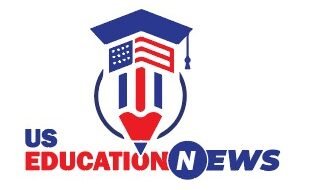American Education News: Education policy leaders are eroding the instructional core, leading to poor outcomes in the US education system. Pre-K gaps affect students’ readiness, highlighting systemic failures.
Amidst discussions on the state of American education, concerns about falling behind and student impacts are at the forefront. Various sources provide insights into the current education landscape, from challenges to potential solutions. Recent headlines shed light on key issues, including the pushback on antisemitism in public schools and debates on arming teachers.
As the education sector faces a time of reckoning, staying informed on the latest news and updates is crucial for all stakeholders. Stay updated on the evolving landscape of American education through reliable sources and ongoing discussions.
American Education News

Table of Contents
Challenges In American Education
American education news today highlights various challenges faced by the United States education system. Despite being one of the most developed countries in the world, the American education system is falling behind its global counterparts.
Funding Issues
One of the biggest challenges in American education is funding. Property taxes largely fund the education system in the United States. This means that schools in low-income areas often lack the necessary resources to provide quality education. As a result, students in these areas have a higher chance of dropping out and are more likely to have lower academic achievements. A recent National Center for Education Statistics report shows that only 27% of fourth-graders from low-income families are proficient in reading, compared to 50% of their peers from higher-income families.
Achievement Gap
Another challenge in American education is the achievement gap. This refers to the disparity in academic performance between students from different socioeconomic, racial, and ethnic backgrounds. While the achievement gap has been narrowing over the years, it remains a significant issue. According to a report by the National Assessment of Educational Progress, the achievement gap between white and black students in fourth-grade reading was 26 points in 1992, and it has only narrowed to 20 points in 2019. The gap between white and Hispanic students was 22 points in 1992 and has only narrowed to 16 points in 2019.
Reforms And Policies
America’s education system is constantly evolving, with various reforms and policies shaping its landscape. These changes have a significant impact on the quality of education and the future of students. Let’s explore some of the key reforms and policies that have influenced the American education system.
No Child Left Behind Act
The No Child Left Behind Act (NCLB) was a landmark education reform that aimed to improve student achievement and close the achievement gap. Enacted in 2001, it emphasized standardized testing, accountability, and annual academic progress. NCLB brought about a renewed focus on data-driven decision-making and targeted interventions to support struggling students.
Common Core Standards
The implementation of Common Core Standards introduced a set of consistent learning goals for mathematics and English language arts. These standards aimed to ensure that students across different states received a uniform and high-quality education. By emphasizing critical thinking, problem-solving, and analytical skills, the Common Core Standards sought to better prepare students for college and the workforce.
Technology Integration In Education
Embracing technology in education is pivotal for staying updated with the news in education and current events in education in 2024. Let’s delve into two crucial aspects of technology integration: Online Learning and EdTech Tools.
Online Learning
Online learning revolutionizes education by providing flexibility and accessibility to learners nationwide. This mode of learning enables students to access educational resources remotely, fostering a dynamic learning experience.
Edtech Tools
EdTech tools play a vital role in enhancing classroom interactions and student engagement. Integrating innovative tools like interactive whiteboards and educational apps can transform traditional teaching methods, making learning more interactive and enjoyable.

Impact Of Covid-19 On Education
The impact of COVID-19 on American education has been significant, leading to widespread school closures and a shift to online learning. Students faced challenges adapting to remote classes, highlighting disparities in access to technology and resources. Schools are now focusing on innovative solutions to ensure continued learning amidst the pandemic.
Impact of COVID-19 on Education The COVID-19 pandemic has significantly impacted the education sector, leading to unprecedented challenges and changes in the way students learn. From the sudden shift to remote learning to concerns about learning loss, the education landscape has undergone a dramatic transformation.
Shift To Remote Learning
One of the most notable changes brought about by the pandemic is the swift transition to remote learning. Schools and educational institutions had to adapt quickly to ensure continuity in education while adhering to social distancing guidelines. Remote learning became the norm, with students attending classes virtually from the safety of their homes. This shift presented both opportunities and challenges, as educators and students navigated the complexities of online education.
Learning Loss
Another pressing issue stemming from the pandemic is the concern over learning loss. With disruptions to traditional classroom instruction and the potential for unequal access to remote learning resources, students may have experienced setbacks in their academic progress. The impact of learning loss is a critical consideration as educators work to address gaps in knowledge and skills caused by the pandemic. In response to these challenges, educators, policymakers, and stakeholders in the education sector have been devising strategies to mitigate the effects of COVID-19 on learning outcomes.
Innovations In Teaching Methods
Education in the news this week has been abuzz with the latest developments in K–12 education. With the ever-changing landscape of education, it’s crucial to stay informed about the innovations in teaching methods that are shaping the future of learning. Let’s delve into some of the exciting advancements that are revolutionizing the way students learn and educators teach.
Project-based Learning
Project-Based Learning (PBL) is a dynamic approach that immerses students in real-world challenges, fostering critical thinking, collaboration, and problem-solving skills. By engaging in hands-on projects, students not only deepen their understanding of academic concepts but also develop essential soft skills that are vital for success in the 21st-century workforce.
Personalized Learning
Personalized Learning (PL) tailors instruction to meet the unique needs and interests of each student. Through the use of adaptive technologies and individualized learning plans, educators can provide targeted support, enabling students to progress at their own pace and maximize their learning potential.
Stay tuned for more exciting updates on advancements in education. We’re committed to bringing you the latest articles about education today!
Higher Education Trends
The latest trends in higher education in the US are shaping the future of American education. Pre-K programs are under scrutiny for failing to prepare students adequately, leading to significant learning gaps. As education policy leaders work to address these issues, the instructional core is being reevaluated to improve student outcomes.
Online Degree Programs
Another emerging trend is the increasing popularity of online degree programs, which provide flexibility and accessibility for students to pursue higher education from anywhere.
Diversity And Inclusion In Education
As we strive for progress in the American education system, it is essential to focus on diversity and inclusion in education. Embracing diversity and fostering inclusion not only enriches the learning experience but also prepares students for the realities of the interconnected world they will enter upon graduation.
Equity In Education
Ensuring equity in education is crucial for providing all students with fair opportunities to succeed. It involves addressing disparities in resources, support, and access to educational programs. By prioritizing equity, we can narrow the achievement gap and create a more inclusive learning environment.
Cultural Competence
Cultural competence in education is about acknowledging and respecting the diverse backgrounds and experiences of students. It involves developing curriculum and teaching methods that reflect and celebrate the cultural richness within the classroom. By promoting cultural competence, educators can create an inclusive and supportive learning environment for all students.
Future Outlook
Discover the promising future outlook in American Education News as innovative reforms aim to boost student success and bridge learning gaps. Stay informed with the latest updates on educational advancements and policies shaping the landscape.
Adapting To Changing Needs
As the world continues to evolve, the American education system must adapt to keep up with changing needs. With advancements in technology and the increasing demand for specialized skills, schools must shift their focus to provide students with relevant education that prepares them for success in the workforce. This means incorporating new technologies and teaching methods, as well as emphasizing skills such as critical thinking, problem-solving, and collaboration. By adapting to changing needs, the American education system can better equip students for the future.

Preparing Students For Tomorrow
The future of the American education system must focus on preparing students for tomorrow’s world. This means not only providing them with the knowledge and skills they need to succeed academically but also preparing them to be responsible citizens and leaders. This includes teaching them to think critically, communicate effectively, and work collaboratively. It also means equipping them with the tools they need to navigate an ever-changing technological landscape and to pursue careers in fields that don’t even exist yet. By emphasizing these skills, the American education system can help ensure that students are prepared to face the challenges of tomorrow.
Frequently Asked Questions
Why is American education falling behind?
United States education is falling behind due to eroded instructional core and policy failures leading to student readiness gaps.
What is the 74 news?
74 News is a platform providing the latest updates and news in the field of education.
Is the USA a good education system?
Yes, the USA has a good education system with diverse opportunities and high-quality institutions.
What is the current American education system?
The current American education system is a decentralized system that is managed by state and local governments. It consists of primary, secondary, and higher education institutions. The system faces challenges such as poor outcomes and gaps in readiness to learn due to a lack of standardization in prekindergarten education.
Conclusion
The current state of American education presents significant challenges that need urgent attention. The erosion of the instructional core and the lack of readiness in students entering kindergarten are key issues that must be addressed. Education policy leaders must focus on reforming the system for better outcomes.
Stay informed with the latest education news to understand the evolving landscape.

